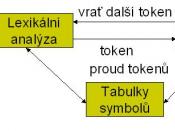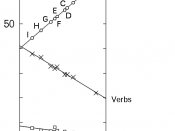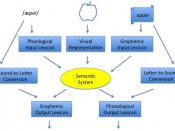It has been known that skilled readers (adult readers) have at their disposal two different procedures for converting print into speech. It has been thought that there is a dictionary look-up (lexical) procedure and a letter-to-sound (non-lexical) procedure, both of which are part of the dual-route cascade model (DRC).
Any word that a reader has read is learned and represented as an entry in their mental dictionary or internal lexicon. Such words can be read out aloud by simply accessing the word's lexical entry from the printed form, and retrieving from that entry the word's pronunciation. This route is generally described as the lexical route and is sometimes referred to as the direct route. The lexical route is primarily needed for irregular words, and involves reading via meaning.
The lexical route will obviously succeed when the input string is a word, but will not produce an output if the word is a non-word, and so this is where the non-lexical route becomes activated to produce a correct output string.
Readers are able to read aloud pronounceable words that they have never seen before, for example non-words. These types of words do not possess lexical entries. Therefore, it has been claimed by dual-route theorists that the reader must also have available a non-lexical route for reading aloud. Which involves a system of rules specifying the relationships between letters and sounds in English. This route allows the correct reading aloud of pronounceable non-words and of words that obey the letter-sound rules of English. However, this in itself does arise to cause some incorrect translations of the "regular" or "irregular" words of English, such as pint or colonel. This route in short is rule based.
For example the word pint, can be processed via both the lexical and non-lexical route. Looking at the...


